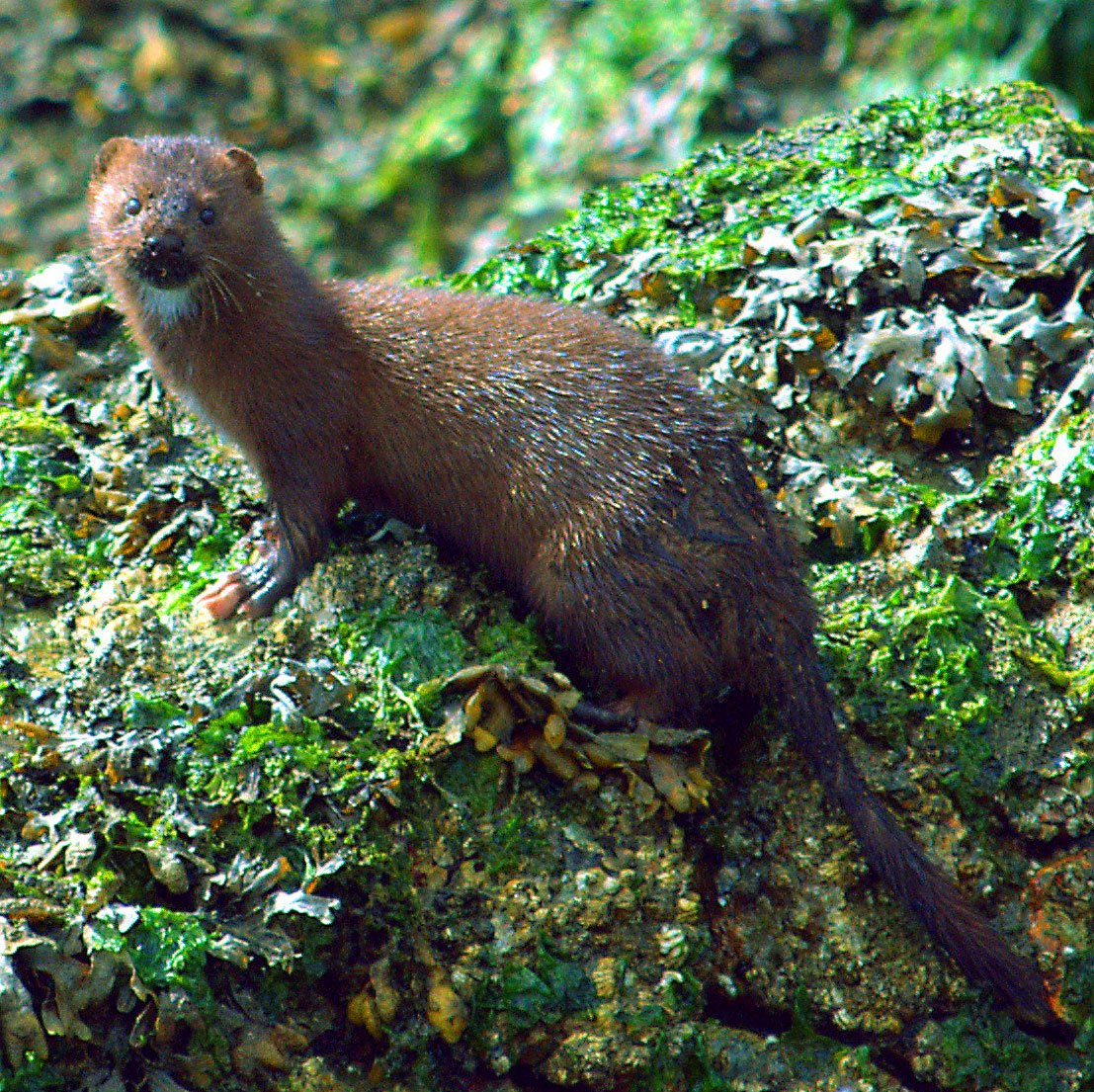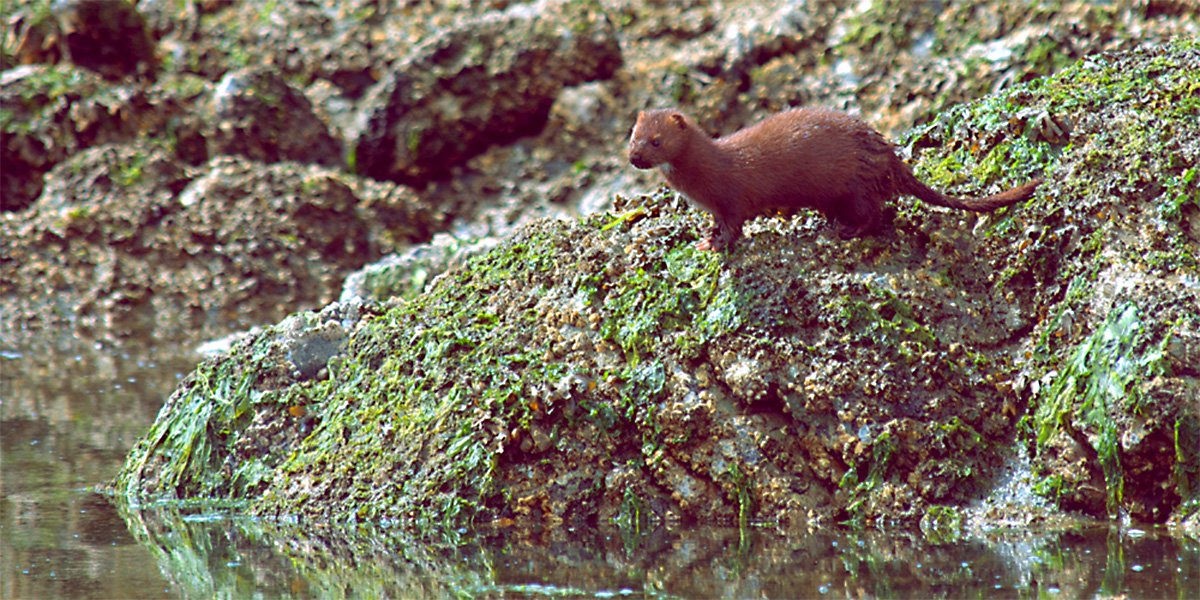Author: Grayson Vinkle
Scientific name: Neogale vison
Size range: 34 – 35cm (just over a foot long), 0.5 – 1.0kg
Identifying Features: There are many identifying features of the American Mink. The tail of a mink makes up ⅓ of its body length, their fur is brown-black with white on the chest, chin and throat areas. They also have an oily outer coat which is waterproof. Their toes are partially webbed which allows them to swim and their front toes can look quite large and distinct as seen in the image on the right. Females are typically smaller than males.
Habitat: Minks have a bunch of different habitats. They prefer forested areas close to water with bushes or rocky areas. They spend a lot of time living on their own, especially the males. They use old dens of other creatures but they can also make dens on water banks, lakes, streams and in old logs. Around the Pacific Northwest mink are often quite at home living along the shoreline. They will often have dens near rocky shorelines where they will spend a large portion of time swimming in the ocean searching for food.


An American Mink taking a Dungeness Crab to shore to eat in Cadboro Bay, Victoria, B.C.
Prey: Mink are aggressive predators and get their food from a variety of sources. Along the shore they often eat Dungeness Crab and Red Rock Crab. They dive down and take the crab to the surface and then swim to the shore to eat. They have often been observed around Victoria taking crabs that are huge relative to their size and appear to wrap their legs around the whole mink’s head as the mink heads to shore. In other habitats they are known to eat crayfish, small frogs, rodents, and birds eggs.
Predators Mink have a number of natural predators including coyotes, bobcats and raptorial birds. Around the Pacific Coast their predators include the Bald Eagle as well as owls.

Life Cycle Females are fertile in winter and may mate with more than one male. She will have one to eight offspring and the baby mink are called kits. The female’s pregnancy lasts 40 to 75 days.
Fun Facts European minks are smaller than American minks. Babies are weak and blind and can’t survive without their mothers for the first 6 weeks. Babies are fully matured between 12 and 16 months. Females can delay the development of fertilized eggs if the weather is bad.
References:
Nhpbs.org. 2021. American Mink – Mustela Vison – Natureworks. [online] Available at: [Accessed 12 January 2021].
BioKIDS – Kids’ Inquiry of Diverse Species, Neovison vison, American mink: INFORMATION. (n.d.). Biokids.umich.edu. Retrieved Accessed 12 January 2021, from https://www.biokids.umich.edu/critters/Neovison_vison/.
Havahart. 2021. Minks Facts | Facts About Minks | Havahart® US. [online] Available at: [Accessed 12 January 2021].
Animalia.bio. 2021. American Mink – Facts, Diet, Habitat & Pictures On Animalia.Bio. [online] Available at: [Accessed 12 January 2021].
Softschools.com. 2021. Mink Facts. [online] Available at: [Accessed 12 January 2021].

